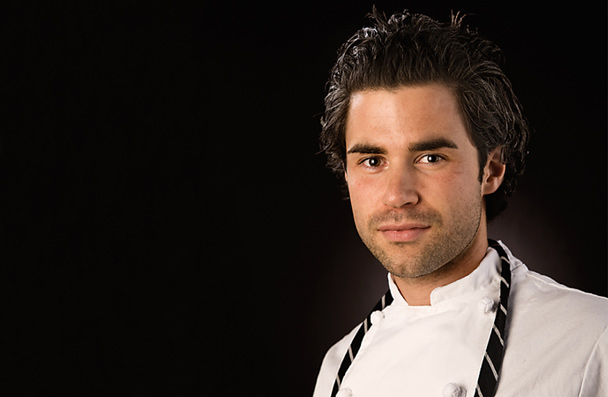For many gastronomes, the biggest story of 2011—quite literally—was the publication of the mammoth Modernist Cuisine, the 40-pound, 2,438-page bible penned by Nathan Myhrvold and co-authors Maxime Bilet and Chris Young. The six-volume tome went on to win the Cookbook of the Year award from the James Beard Foundation, and Bilet has continued to gain notice in his ongoing role as head chef for research and development at the Seattle-based Cooking Lab, an arm of Myhrvold's Intellectual Ventures. Before stepping into the spotlight in Seattle and landing on Forbes' 2011 30 Under 30 list, Bilet trained in New York and in England, including at the vanguard of British experimentation, Heston Blumenthal's Fat Duck.
We caught up with Bilet as he was putting the finishing touches on Modernist Cuisine at Home, a collection of more than 400 new recipes specifically geared to the home cook, due for publication in October. The insights he shares below about all things flame-kissed are a veritable scientist's guide to grilling, from sous-vide to low-tech. And don't miss Bilet's simple solution to keep fish from sticking while delivering the perfect sear.
Gourmet Live: What is the biggest misconception when it comes to grilling technique?
Maxime Bilet: There's a definite misconception that in order to achieve the juiciest, most tender food with a distinct grilled flavor, you have to cook the food all the way through on the grill. The issue is that grilling provides an incredible radiating heat source via coals, which makes it very easy to overcook a food. So from the Modernist Cuisine sense, we like to take a little bit of the large possibility for error away by using grilling as more of a finishing method. Our best practice is to actually pre-cook the food sous-vide, and then sear it on the grill very quickly on all sides so you get a good char without ever really cooking the food itself. The grill essentially becomes just a searing surface.
GL: What scientific reaction or process provides a food with that distinctive grill flavor?
MB: What you associate with grill flavor is just the fat drippings and juices from the meat falling onto very hot coals, which pyrolyzes them and transforms them into smoke. The smoke gets redistributed back onto the meat, and that's what creates the grill flavor. So if you grill a zucchini or an onion, you're going to get a nice char, but you aren't really going to get grilled flavor because you don't have those essential fat drippings.
GL: What's the number one mistake people make when grilling?
MB: You don't want to sear meat when it's at room temperature because the heat transfer is going to be too fast, compared with searing cold meat. If you really want to achieve that great crust without cooking it sous-vide first, you should freeze or par-freeze the surface of the meat before grilling. When you put a piece of frozen meat on a hot grill, you get a beautiful crust, and the meat itself is going to stay very cold and will never cook, which is perfect for our intentions because we want a really good sear without overcooking the interior.
After you've seared the meat, take it off the grill and let it come to room temperature. Then it's up to you if you want to finish it off by slowly cooking it in the oven, or using your grill by banking all of your coals on one side of the grill to transform it into an oven and utilize indirect heat.
GL: What's the best way to ensure grilled foods stay moist and tender?
MB: Cooking a food sous-vide before grilling it will lead to the best results, but that's only if you're willing to do a two-step cooking method. If you want to cook your food all the way on the grill, then the best way to ensure it stays moist is to transform your grill into an oven.
So with meat, for example, you sear it from its frozen state, then you take it off the grill and bring it to room temperature. Next, move your coals to one side of the grill. You then have to create a buffer so that the meat isn't directly on the grill while it finishes cooking, because the heat transfer is too strong. Put a thick slice of onion or a slab of beef fat or bacon on the grill, and then put the meat on top of it and continue cooking it on the side of the grill without the coals. But before you put on the cover, place a little pan of ice water on the grill, which will help cool the air as it circulates. You've essentially improvised a low-temperature oven on your grill.



 Pinterest
Pinterest


